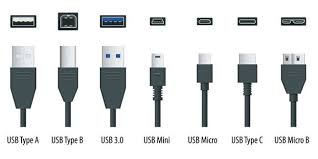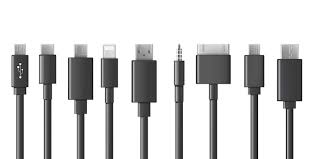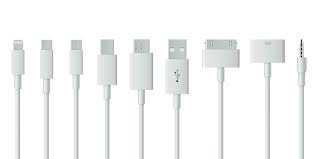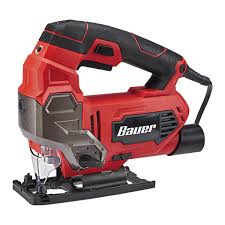I. Introduction

A charger is a device that converts electrical energy into chemical energy, which is then used to charge a battery. Chargers are typically used to charge batteries in electronic devices such as smartphones, laptops, and tablets.
There are many different types of chargers available, each with its own advantages and disadvantages. Some of the most common types of chargers include:
- AC chargers
- DC chargers
- USB chargers
- Wireless chargers
In this article, we will discuss the different types of chargers in more detail, as well as the benefits of using a charger. We will also provide tips on how to choose the right charger for your needs and how to use a charger safely.
II. Types of Chargers

There are many different types of chargers available on the market, each with its own unique set of features and benefits. Some of the most common types of chargers include:
AC chargers:
These are the most common type of charger and are typically used to charge devices from a wall outlet. AC chargers come in a variety of shapes and sizes, and some models even include built-in USB ports for charging multiple devices at once.
DC chargers:
DC chargers are used to charge devices from a car battery or other DC power source. These chargers are typically smaller and lighter than AC chargers, making them ideal for travel.
Fast chargers:
Fast chargers are designed to charge devices more quickly than traditional chargers. These chargers typically use a higher voltage or current to deliver more power to the device, which can shorten the charging time.
Wireless chargers:
Wireless chargers use electromagnetic induction to charge devices without the need for a cable. These chargers are convenient and easy to use, but they typically take longer to charge devices than wired chargers.
Solar chargers:
Solar chargers use solar energy to charge devices. These chargers are environmentally friendly and can be used anywhere there is sunlight. However, solar chargers typically take longer to charge devices than other types of chargers.
The type of charger you choose will depend on your specific needs and preferences. If you need to charge a device quickly, a fast charger is a good option. If you need to charge a device while you’re on the go, a DC charger is a good option. And if you want to charge a device without using a cable, a wireless charger is a good option.
III Types of Chargers

There are many different types of chargers available on the market, each with its own unique features and benefits. Some of the most common types of chargers include:
AC chargers plug into a wall outlet and provide a steady stream of power to your device. They are the most common type of charger and are typically included with new devices.
USB chargers connect to your device via a USB cable and can be powered by a wall outlet, a computer, or a power bank. They are often more compact and portable than AC chargers, making them a good option for on-the-go charging.
Wireless chargers do not require a cable to connect to your device. Instead, they use electromagnetic induction to transfer power from the charger to the device. Wireless chargers are convenient and easy to use, but they are typically more expensive than other types of chargers.
Fast chargers can charge your device more quickly than standard chargers. They typically use a higher voltage or current to deliver more power to your device. Fast chargers are a good option for people who need to quickly charge their devices.
When choosing a charger, it is important to consider the following factors:
The type of device you need to charge
- The power output of the charger
- The convenience of the charger
- The price of the charger
By considering these factors, you can choose the best charger for your needs.
IV. How to Choose a Charger

When choosing a charger, there are a few factors to consider.
- The type of device you need to charge
- The speed of charging
- The power output
- The price
Let’s take a closer look at each of these factors.
The type of device you need to charge
The first thing you need to consider when choosing a charger is the type of device you need to charge. There are a variety of different chargers available, each designed for a specific type of device.
USB chargers are the most common type of charger and can be used to charge a wide range of devices, including smartphones, tablets, and laptops.
AC chargers are typically used to charge larger devices, such as laptops and desktop computers.
Wireless chargers are a convenient option for charging devices without having to plug them in.
Once you know the type of device you need to charge, you can narrow down your choices to chargers that are compatible with your device.
The speed of charging
The speed of charging is another important factor to consider when choosing a charger. Some chargers are faster than others, so it’s important to choose a charger that will meet your needs.
Fast chargers can charge your device in a fraction of the time that a standard charger would take.
Slow chargers are a more affordable option, but they will take longer to charge your device.
You’ll need to decide how important the speed of charging is to you and choose a charger that meets your needs.
The power output
The power output of a charger is measured in watts (W). The higher the power output, the faster the charger will be able to charge your device.
Most devices require a minimum power output of 5W to charge.
Fast chargers typically have a power output of 18W or higher.
You’ll need to make sure that the charger you choose has a power output that is compatible with your device.
The price
The price of a charger is another important factor to consider. Chargers can range in price from a few dollars to several hundred dollars.
Cheaper chargers are typically less powerful and slower than more expensive chargers.
Expensive chargers are typically more powerful and faster, but they may not be necessary for everyone.
You’ll need to decide how much you’re willing to spend on a charger and choose one that meets your needs.
Once you’ve considered all of these factors, you should be able to choose a charger that is the best fit for your needs.
V. How to Use a Charger

Using a charger is a simple process, but there are a few things you should keep in mind to ensure that you are using it safely and effectively.
First, make sure that the charger is compatible with your device. The charger should have the same voltage and amperage rating as your device. You can find this information in your device’s manual or on the device itself.
Once you have confirmed that the charger is compatible with your device, you can plug it in. If you are using a wall charger, plug the charger into an outlet and then plug the other end into your device. If you are using a car charger, plug the charger into the cigarette lighter port in your car and then plug the other end into your device.
Once the charger is plugged in, it will start to charge your device. The charging process may take a few hours, depending on the battery capacity of your device.
While your device is charging, you should avoid using it or disconnecting the charger. This can damage the battery and shorten its lifespan.
Once your device is fully charged, you can unplug the charger from your device and the outlet.
Here are a few additional tips for using a charger safely and effectively:
Never leave a charger plugged in unattended.
Do not use a charger that is damaged or frayed.
Do not use a charger that is not UL-listed.
Do not charge your device in a hot or humid environment.
Do not charge your device while it is in a case.
By following these tips, you can safely and effectively use a charger to keep your devices charged and ready to use.
VI. Safety Tips for Using a Charger
When using a charger, it is important to take some safety precautions to avoid injury or damage to your device. Here are a few tips:
Always use a charger that is UL-listed or CE-certified. This means that the charger has been tested and meets safety standards.
Do not overload the outlet. Only plug one charger into an outlet at a time.
Never leave a charger plugged in unattended. Unplug it when you are not using it.
Do not use a charger if it is damaged. If the cord is frayed or the plug is loose, replace the charger.
Keep the charger away from children. Children should not be allowed to play with chargers, as they can be a choking hazard.
By following these tips, you can help to keep yourself and your devices safe from harm.
VII. FAQs About Chargers
Here are some common questions about chargers and their answers:
- What is the difference between a fast charger and a regular charger?
A fast charger can charge a device’s battery more quickly than a regular charger. This is because a fast charger uses a higher voltage and amperage to deliver power to the device. However, fast chargers can also generate more heat, so it is important to use them with caution.
- Can I use a fast charger with any device?
Not all devices are compatible with fast chargers. You should check the manufacturer’s specifications to see if your device supports fast charging. If your device does not support fast charging, using a fast charger may damage the battery.
- How long does it take to charge a device with a fast charger?
The charging time will vary depending on the device and the capacity of the battery. However, you can generally expect a fast charger to charge a device’s battery in about half the time it would take with a regular charger.
- Is it safe to use a fast charger?
Fast chargers can be safe to use, but it is important to use them with caution. Here are some tips for safe fast charging:
- Use a fast charger that is UL-certified.
- Only use the fast charger with the device it was designed for.
- Do not use a fast charger if the cable or plug is damaged.
- Do not leave a device charging unattended.
- What are the benefits of using a wireless charger?
Wireless chargers are convenient and easy to use. You simply place your device on the charger, and it will start charging. Wireless chargers are also safe to use, as they do not generate heat.
- What are the drawbacks of using a wireless charger?
Wireless chargers are typically slower than wired chargers. They can also be more expensive than wired chargers.
- Which type of charger is best for me?
The best type of charger for you will depend on your needs and preferences. If you need a charger that can charge your device quickly, then a fast charger is a good option. If you want a charger that is easy to use, then a wireless charger is a good option.
Conclusion
In this article, we have discussed the different types of chargers available, how they work, and which one is best for your needs. We have also provided tips on how to use your charger safely and how to troubleshoot common problems.
We hope that this article has been helpful and that you are now able to choose the best charger for your needs. If you have any further questions, please do not hesitate to contact us.. Resources
Resources
Here are some resources that you may find helpful:
- CNET’s list of the best chargers
- Tom’s Guide’s list of the best phone chargers
- Consumer Reports’ list of the best phone chargers
FAQs About Chargers
1. What is a charger?
A charger is a device that converts electrical energy into a form that can be used to charge a battery. Chargers typically use a direct current (DC) power source, such as a wall outlet or a car battery, to provide power to the battery.
2. What are the different types of chargers?
There are many different types of chargers available, each with its own unique features and benefits. Some of the most common types of chargers include:
AC chargers:
These chargers use a standard AC power outlet to provide power to the battery.
DC chargers:
These chargers use a DC power source, such as a car battery, to provide power to the battery. Fast chargers:
These chargers can charge a battery more quickly than a standard charger. Wireless chargers These chargers do not require a cable to connect to the battery. Instead, they use electromagnetic induction to transfer power to the battery.
3. How do I choose the right charger for my device?
When choosing a charger for your device, there are a few things you need to consider:
The type of device:
Different devices require different types of chargers. Make sure to choose a charger that is compatible with your device.
The power output:
The power output of a charger is measured in watts (W). The higher the power output, the faster the charger will charge your device.
The safety features:
Make sure to choose a charger that has safety features such as over-voltage protection and short-circuit protection.
4. How do I use a charger?
To use a charger, simply plug it into an electrical outlet and connect it to your device. Once the charger is connected, the battery will begin to charge.
5. What are the safety tips for using a charger?
Here are some safety tips for using a charger:
- Never leave a charger unattended while it is in use.
- Do not use a charger if it is damaged.
- Do not use a charger if it is not compatible with your device.
- Do not charge your device in a humid or wet environment.
- Do not charge your device in direct sunlight.




